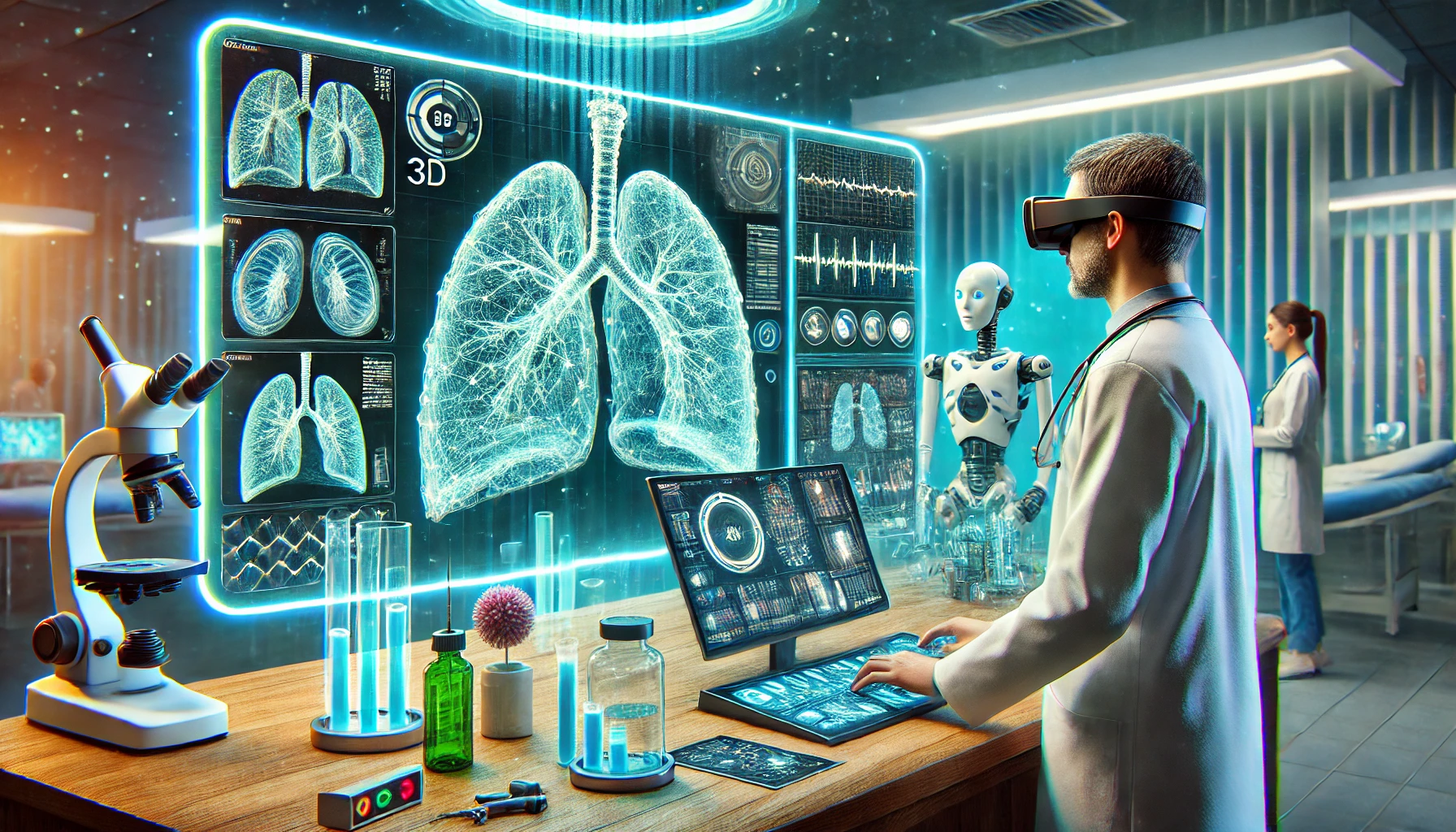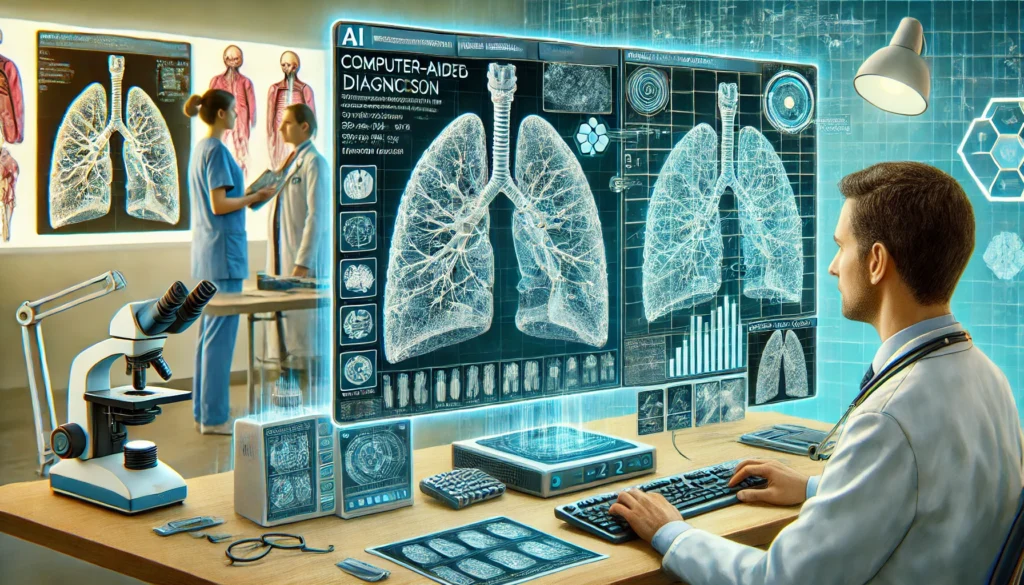

AI is Helping Doctors Detect Lung Cancer Sooner
Lung cancer is one of the most serious and life-threatening diseases in the world. One of the biggest reasons it causes so many deaths is because it’s often found too late, when the cancer has already spread. But what if doctors could find it earlier, when it’s easier to treat and cure? Thanks to new technology powered by artificial intelligence (AI), that is becoming more and more possible.
Computer-Aided Diagnosis (CAD) is a special kind of software that uses AI to help doctors read medical images like CT scans. Think of it like having a super-smart assistant who never gets tired and helps spot signs of lung cancer faster and more accurately than ever before. In this article, we’ll explain what CAD is, how it works, and the five big ways it’s changing the way we fight lung cancer.
What Is Computer-Aided Diagnosis (CAD)?
Computer-Aided Diagnosis, or CAD, is a tool that helps radiologists (the doctors who read medical scans) look for signs of disease. Using machine learning and deep learning (which are types of AI), CAD systems scan lung images to find tiny growths called nodules that could be cancer. CAD doesn’t make the final decision—doctors still do that—but it gives them extra information so they can be more accurate.
It’s kind of like using a GPS when driving. The GPS doesn’t drive for you, but it helps guide you and shows you where there might be traffic or a faster route. In the same way, CAD shows doctors where to look more closely.
5 Key Benefits of Using CAD for Lung Cancer Screening
1. Better at Catching Early Signs: Automated Nodule Detection
CAD systems use AI to look for signs of cancer that are very small and easy to miss. They highlight these spots in the scan, which helps doctors take a closer look. This means more chances to catch cancer early, before it grows or spreads.
2. Smarter Tools for Doctors: Risk Assessment and Nodule Details
When a nodule is found, CAD can measure how big it is, what shape it has, and how dense it is. It even gives a risk score that tells doctors how likely the nodule is to be cancerous. This helps doctors make better choices about what to do next.
3. Fewer Mistakes: Reducing False Alarms and Misses
One big problem in medical screening is false positives (when the scan looks like cancer but it’s not) and false negatives (when the scan misses a real cancer). CAD helps reduce both of these by comparing the scan to lots of other examples and learning patterns. This means fewer patients go through extra tests for no reason, and fewer cases of cancer are missed.
4. Faster Workflows: Helping Doctors Work More Efficiently
Doctors and radiologists are very busy. CAD systems help by doing the first scan of the images and pointing out possible problem areas. This saves doctors time, so they can spend more time with patients and focus on the cases that really need attention.
5. Works with Other Tools: EHR and Hospital Systems Integration
CAD can connect with Electronic Health Records (EHRs) and hospital systems. This means doctors can see past scans, medical history, and CAD results all in one place. It helps with long-term care and makes sure nothing important is missed.
Pros and Cons of Using CAD for Lung Cancer Screening
Pros:
- Helps find lung cancer early, when it’s easier to treat
- Gives doctors more accurate information
- Reduces mistakes and improves safety
- Speeds up the entire screening process
- Helps doctors make better decisions with extra data
Cons:
- CAD systems can be expensive for hospitals to install
- Doctors still need to review the results manually
- Some systems may give false positives, leading to extra tests
- The quality depends on how clear and detailed the scans are
Where Is CAD Being Used Today?
CAD is already being used in many hospitals and clinics, especially for people who are at high risk for lung cancer, like long-term smokers. Here are a few examples:
- Hospitals & Imaging Centers: CAD helps doctors in regular lung cancer screenings.
- Telemedicine & Remote Clinics: CAD can be used in places that don’t have a lot of doctors. AI helps make sure people in rural or underserved areas still get good care.
- Clinical Research: Scientists use CAD to study lung cancer, test treatments, and track progress.
- Preventive Healthcare: CAD is also used for regular check-ups in people who are more likely to get lung cancer.
The future of CAD technology looks exciting. As AI gets smarter, CAD systems will become even more accurate, faster, and easier to use. In the coming years, we might see real-time diagnosis during scans, even better risk predictions, and systems that work together with doctors to build treatment plans personalized for each patient.
Researchers are working on making CAD more affordable, more accessible, and able to work with different types of medical imaging. As more hospitals start using it, it could help save thousands of lives by catching lung cancer before it becomes deadly.
AI-powered Computer-Aided Diagnosis is changing how doctors find and treat lung cancer. While it’s not perfect, it offers a big improvement over traditional methods. With CAD, doctors can work faster, spot cancer earlier, and feel more confident in their diagnoses. It’s a powerful tool that supports human knowledge, not replaces it.
If you or someone you know is at high risk for lung cancer, ask your doctor if CAD technology is part of your screening process. Early detection saves lives—and AI is here to help make that happen


